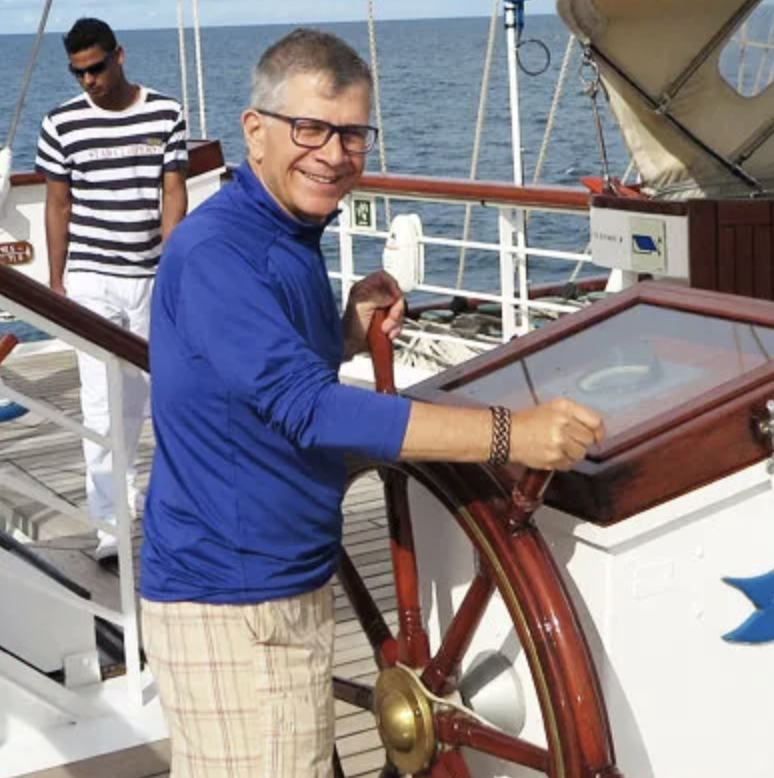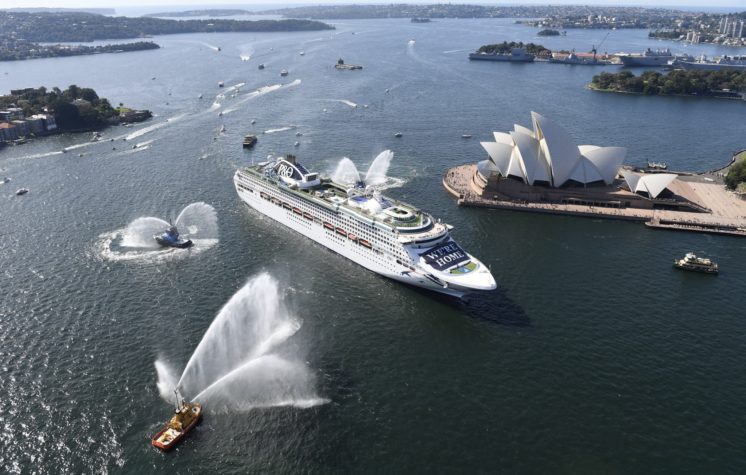Cruising resumes in Australia later this month when the Pacific Explorer sails on a four-night itinerary from Sydney to Brisbane on May 31. It will be the first official commercial cruise of a vessel of this size after a two-year absence because of the global pandemic.
Australians have welcomed the return with strong bookings across close-to-home and overseas itineraries. And almost everyone accepts that there will be COVID cases aboard ships.
It’s much more about what happens than whether it does happen – just like the community on shore.
Cruise lines are more prepared than almost any other tourism venue, with new health protocols and enhanced medical facilities.
In recent months there has been a rise in the number of cases on board cruise ships sailing in American waters. The US Centers for Disease Control and Prevention (CDC) reported that COVID cases have been detected on 76 of 92 cruise ships with passengers onboard. Of those 65 were being investigated by the CDC.
But the CDC has also relaxed regulations on board, as the cases have been properly controlled.
So what happens if you get COVID onboard a cruise ship sailing in Australia?
The Queensland, Victorian and New South Wales state governments have all signed up to the Eastern Seaboard Cruise Protocols.
Cruise passengers will:
- Be required to wear masks while embarking and disembarking, and indoors when social distancing is not possible.
- Disembarkation will be staggered to ensure social distancing can be maintained.
- Be provided with free access to masks and hand sanitiser.
- Be required to have a negative rapid or PCR test before boarding the ship whether they are symptomatic or not.
- Be tested prior to a shore excursion if they are symptomatic or there has been increased transmission on board.
- Be tested prior to final disembarkation if the passenger is symptomatic or if there has been increased transmission of COVID 19 on board.
Cruise lines will also ensure that passengers have access to free medical assessments for respiratory and other symptoms of COVID-19 including free access to COVID tests and they will have the capacity to provide intensive care level support for COVID cases, including the administering of antiviral medication. If a cruise line is unable to manage the treatment of a patient they will transfer COVID cases to hospital and will work to develop a notification and referral process for each port.
Anyone who tests positive will have to isolate for seven full days. They won’t have to have a test at the end of isolation. Close contacts must isolate for the full seven days and will be required to test on days one and six.
Both positive cases and their close contacts will be able to drive home if their personal transport is at the port and they are well enough to drive home. If they do not have their own private transport they will be driven to a designated hotel or their home by a provider that has entered into an agreement with the cruise industry. Positive cases and close contacts will not have to pay for the cost of transport and accommodation.
The cruise lines will notify passengers of any COVID cases onboard and will report the COVID cases to port authorities 12-24 hours prior to arrival.
“As broadly reported, the protocols include pre-cruise testing for covid, wearing of masks during embarkation and disembarkation and on board where social distancing is not possible plus onboard management such as testing for covid, the availability of isolation cabins and contact tracing should there be a case of covid.
“The protocols are aimed at ensuring people can be confident about cruising. Looking to overseas experience, you can see that 12 million people have already cruised, which reflects the level of confidence in returning to holidays at sea, which we expect will also be reflected here.”
P&O Australia’s substantial healthy cruising program is spelt out here.












I would like to see it go back to normal cruising!! leave the masks in the rubbish bin!!
Hi
Given that both jabbed and unjabbed folk can contract covid, will cruise lines relax requirements for jabs?
Obviously both groups can contract covid, so why penalise one group, but not the other?
Recent data indicates that being jabbed certainly has many associated risks, so one is not necessarily advantaged by choosing the jab.
An unjabbed person is of no more threat than a jabbed person – both can contract and transmit viruses.
Therefore, is it fair to turn back unjabbed folk from cruises?
Isn’t it time to recognise that there has been a fair amount of duplicity, with so many being forced to comply/allowed no choice – after all it is officially acknowledged that we do not have vaccines here, right?Let’s move to sensible inclusion?